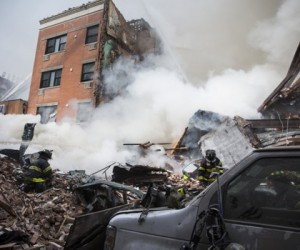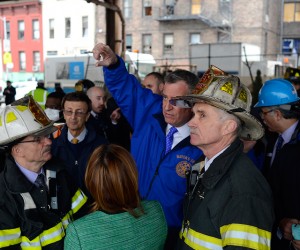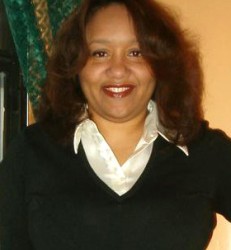
News Americas, NEW YORK, NY, Thurs. Mar. 13, 2014: Two Puerto Rico nationals have been identified as the victims so far of Wednesday’s deadly two-building explosion at 116th Street and Park Avenue in El Barrio or Spanish Harlem, New York, home to a large Puerto Rican community.
Carmen Tanco, who moved to New York City at age 18 to be with her father, lived on the third floor of 1644 Park and worked as a dental hygienist while attending the Bethel General Assembly church.
Yesterday, apartment number 2 in which she lived went up in smoke, claiming her life at age 67.
Hunter College cop Griselde Camacho, 48, a former cop in Puerto Rico and a single mother of a 15-year-old son, also lost her life Wednesday.
Tanco and Camacho are the only two victims who have so far been identified, plunging their families into mourning.
A third victim has not been named and with several individuals unaccounted for, authorities estimate the death toll could rise in the five-story apartment building explosion.
Among the nine missing is George Amadeo, 44, who was home on the fifth floor of 1646 Park Avenue during the collapse. Firefighters were still frantically picking through rubble in search of survivors.
At least two dozen more were injured, including two critically.
Officials said 13 people went to Harlem Hospital Center, including a 15-year-old boy in critical condition; 22 people at Mount Sinai Hospital, including a woman in critical condition with head trauma; and 18 at Metropolitan Hospital Center, all with minor injuries.

City officials said the explosion may have been touched off by a gas leak but the cause of the gas leak remained unclear on Wednesday night as a team from the National Transportation Safety Board, which oversees pipeline safety, arrived to help investigate.
Con Edison said a call of a smell of gas at 1652 Park Avenue came in at around 9:13 a.m. Wednesday. A Con Edison crew was dispatched at 9:15 a.m. and was en route to the scene when the explosion occurred at 9:31 a.m. The two five storied 55 feet tall buildings were reduced to a pile of rubble.
The Fire Department said it received the first report of a fire at 9:31 a.m., and discovered on arriving two minutes later that the buildings housing a total of 15 apartments, a church and a piano store, had gone up in smoke, creating a thick gray cloud, reminiscent of 91, that blanketed the neighborhood.
The explosion affected 1642, 1644 and 1646 Park Ave., and the latter two buildings collapsed.
“This is a tragedy of the worst kind because there was no indication in time to save people,” Mayor Bill de Blasio said yesterday while, warning that the search “will take quite a bit of time.”
Con Edison officials insist they “will conduct a thorough investigation in conjunction with all appropriate agencies to determine the cause of this tragedy.”

Spanish Harlem, also known as El Barrio and East Harlem, is a neighborhood sandwiched in the northeastern corner of Manhattan that has historically been home to several immigrant communities. With a population of nearly 120,000 it is today one of the largest predominantly Latino communities in New York City and includes the area formerly known as Italian Harlem, which still harbors a small Italian American population along Pleasant Avenue. The neighborhood boundaries are Harlem River to the north, the East River to the east, East 96th Street to the south, and 5th Avenue to the west.
The Puerto Rican presence there has been felt since the early 1900s; when President Woodrow Wilson on March 2, 1917 signed the Jones Act, Puerto Ricans were granted American citizenship along with the freedoms outlined in the United States constitution.
Manhattan Community District 11, which covers East Harlem in its entirety, is a mostly low and moderate income area. It is made up of first and second generation Puerto Ricans, African-Americans and a growing population of Mexicans, West Indians, Dominicans, Asians, Salvadorans and other Central American immigrants.








